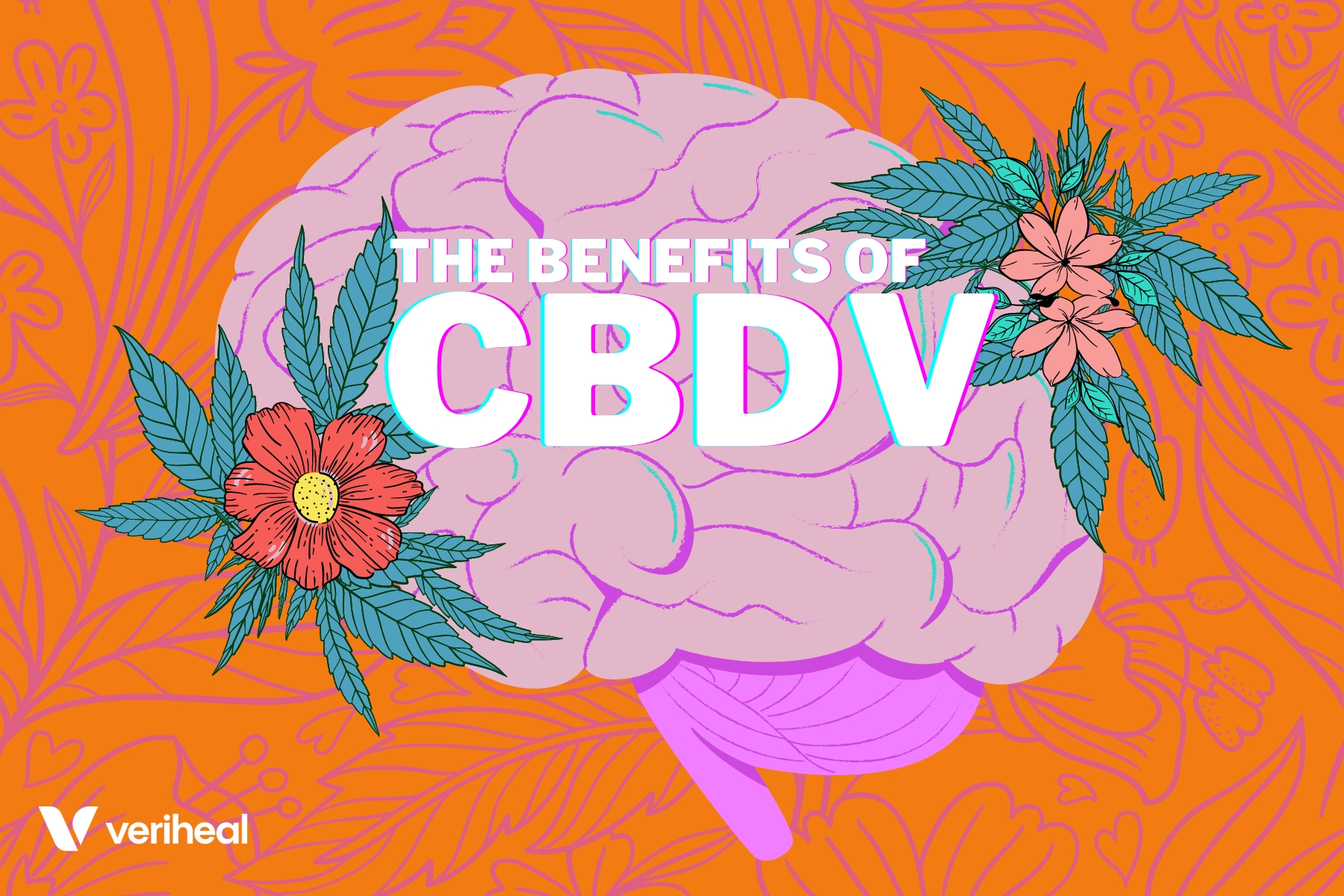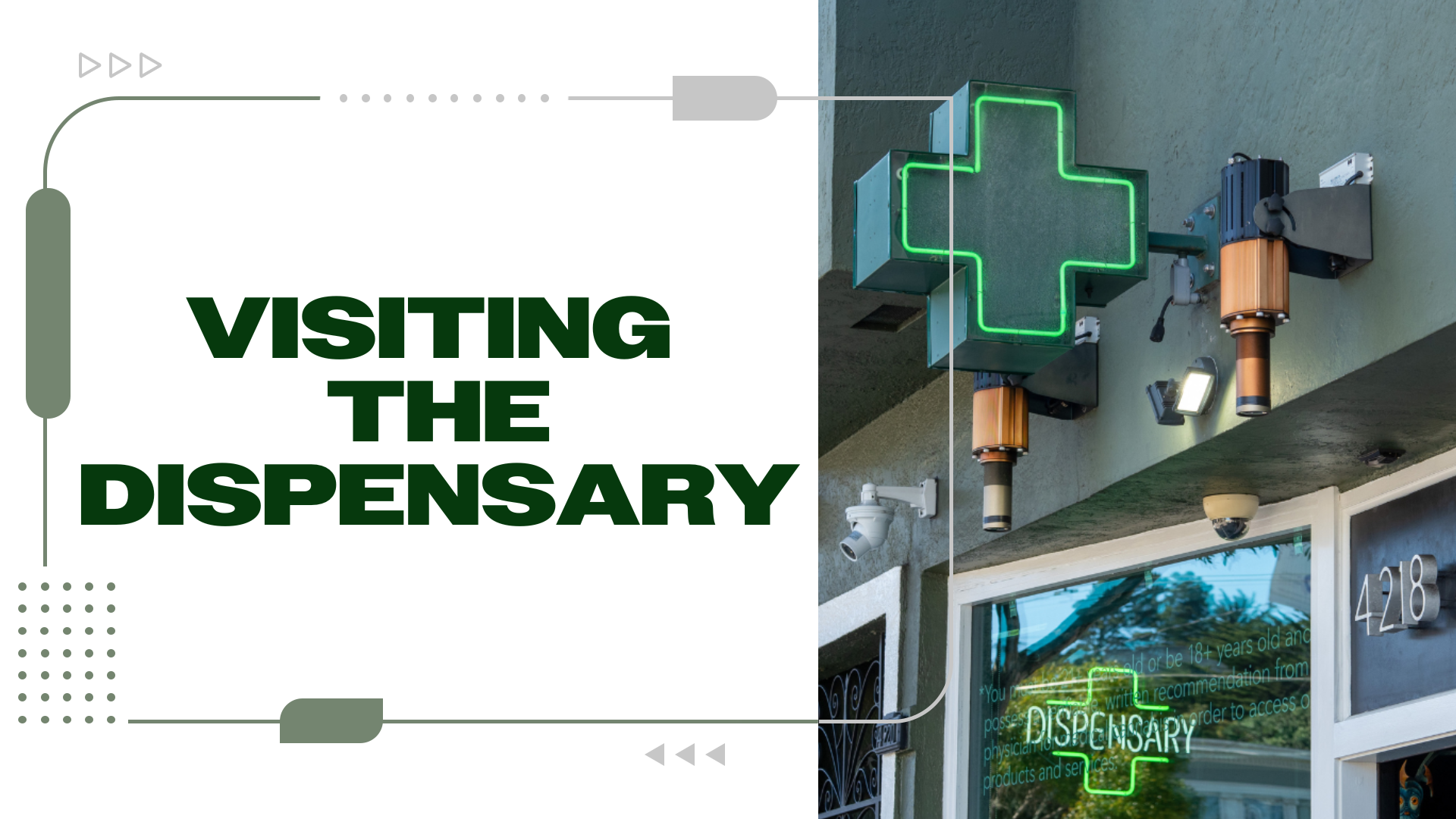You’ve heard of CBD (cannabidiol) and maybe even CBG (cannabigerol)—but what about CBDV (cannabidivarin)? Often an overlooked cannabinoid, CBDV has resurfaced as a valuable focus for the cannabis research community and was recently discussed during a fascinating interview with Veriheal cannabis coach and medical expert Dr. Abraham Benavides. From potential benefits for Autism Spectrum Disorder (ASD) and various inflammatory diseases to soothing anxiety, many promising therapeutic opportunities may arise from further investigations into this compound.
However, before diving into the therapeutic applications of CBDV, it’s essential to understand what this unique cannabinoid is and how it differs from its well-known counterparts, CBD and THC.
What Is CBDV?
Cannabidivarin (CBDV) is a naturally occurring, rare compound in cannabis plants. Like CBD, it’s a non-intoxicating phytocannabinoid with a similar molecular structure. First isolated in 1969, CBDV typically occurs in higher concentrations in CBD-dominant, low-THC strains.
As Dr. Benavides explains, CBDV belongs to a group of “varin” cannabinoids that have two fewer carbon atoms compared to their non-varin counterparts. This structural difference imparts unique properties to these varin cannabinoids. When discussing the stark differences between the makeup of CBD vs. CBDV, Dr. Benavides stated, “If you’ve studied organic chemistry, you would know that even just one atom—or one atom in a different place—makes an entire world of difference.”
Here’s What the Latest Scientific Research Says About CBDV
The latest scientific research on CBDV sheds light on its unique interaction with the endocannabinoid system (ECS), a complex cell-signaling network that maintains balance and homeostasis within the body. There are two primary receptors in the ECS:
- CB1: primarily found in the brain and central nervous system, where it regulates pain, inflammation, nausea, and seizures. Additionally, cannabinoids work in this area to offer neuroprotection.
- CB2: predominantly located in the immune system and peripheral tissues (arms and legs), working primarily as an anti-inflammatory. Both receptors may have anticancer effects.
Recent research has revealed that CBDV targets various specific receptors in the body, contributing to overall health and well-being. These receptors play a crucial role in various physiological processes, and CBDV’s interaction with them opens up a range of potential therapeutic applications. Let’s explore them in depth.
Transient Receptor Potential (TRP) Receptors
Transient receptor potential (TRP) receptors are a family of ion channels that play crucial roles in sensing temperature, pressure, and chemical stimuli, contributing to various physiological processes in the body. CBDV’s interaction with these receptors may help alleviate chronic inflammatory and neuropathic pain, intestinal inflammation, nausea, seizures, and itching.
G Protein-Coupled Receptors (GPRs)
G Protein-Coupled Receptors (GPRs) are a large family of cell surface receptors that detect external signals and trigger cellular responses, playing a vital role in various physiological processes and cellular communication. Research shows CBDV targets GPRs, including GPR55 and GPR6.
By targeting GPR55, CBDV may help mitigate chronic inflammatory and neuropathic pain. As it interacts with GPR6, it may have anti-proliferative and cancer-fighting properties, as it may block cell cycles that are “going bad.”
Dopamine Receptors
Dopamine is a neurotransmitter in the brain that plays a vital role in regulating mood, motivation, reward, movement, and cognitive functions.
The way CBDV interacts with dopamine-2 receptors may offer significant therapeutic advantages, given that these receptors are involved in processes such as learning, memory, emotion, cognition, and movement. Since dopamine levels are affected in various conditions, including Alzheimer’s, Parkinson’s, neuropathic pain, epilepsy, anxiety, schizophrenia, and mood disorders, CBDV’s influence on dopamine receptors holds substantial potential for treatment.
GABA Receptors
GABA (gamma-aminobutyric acid) is an inhibitory neurotransmitter in the central nervous system that helps regulate neuronal excitability and plays a critical role in reducing anxiety and promoting relaxation. CBDV has been observed to interact with GABA receptors, potentially helping to alleviate seizures and anxiety. While the exact antiseizure and anticonvulsant mechanisms behind CBDV’s influence on GABA receptors remain unclear, this area of study presents an exciting avenue for continued research.
The Impact of CBDV on Certain Prescribed Medications
Dr. Benavides highlighted CBDV’s interaction with key enzymes in the body. He emphasized that CBDV is an inhibitor of CYP450 and CYP1A1 enzymes, which play crucial roles in breaking down medications. Dr. Benavides explained, “CYP450 is involved in breaking down around 90% of all prescribed medications, and so this is not something that can necessarily be overlooked.” He elaborated on the CYP450’s significance, stating that it is part of a “superfamily” of enzymes responsible for breaking down essential medicines, including blood thinners like warfarin, antidepressants, statins, and antiepileptic medications.
Although CBDV’s inhibition of these enzymes may be less potent than CBD, it is still essential to consider the potential impact on other medications. Dr. Benavides clarified that the clinical significance of CBDV’s effects on raising medication levels might not be substantial, but caution is necessary when dealing with specific medications.
Dr. Mikhail Kogan, the interview host and medical director from the George Washington Center for Integrative Medicine, added valuable insights to the discussion. He explained that the method of administration, such as taking CBDV sublingually (under the tongue), could significantly reduce the risk of interactions with medications.
Dr. Kogan explained, “this is important because we think that if you take CBD and CBDV and all these molecules under the tongue, and very little gets swallowed, that impact on the liver is very minimal because of the so-called lack of “first pass effect.” We like to give things under the tongue because that almost completely nullifies this possibility of interaction.”
Why You Should Get Your Medical Marijuana Card
Veriheal has satisfied millions of patients nationwide by giving them access to these benefits
- Larger purchase limits
- Peace of mind
- Enhanced legal protection
- Access to higher potency strains
- Save up to 25% on cannabis purchases
- Skip the line at the dispensary
By considering the nuances of CBDV’s interaction with essential enzymes and the mode of administration, users can make informed decisions about incorporating CBDV into their wellness routines.
What Is the Potential Clinical Significance of CBDV?
Continuing the discussion, Dr. Benavides elaborated upon the potential clinical significance of CBDV, exploring its promising therapeutic applications related to:
- Seizures
- Autism Spectrum Disorder (ASD)
- Nausea
- Duchenne Muscular Dystrophy (DMD)
- Ulcerative Colitis (UC) and Inflammation Bowel Disorders (IBD)
Seizures
The potential clinical significance of CBDV is underscored by its approved use in treating seizure-related disorders. The European Medicines Agency approved CBDV as a treatment for Rett Syndrome in 2017 and Fragile X Syndrome in 2018, thanks to its demonstrated anti-seizure properties. This achievement was made possible by GW Pharmaceuticals, the creators of Epidiolex, a CBD-based epilepsy drug approved in the United States.
Promising pre-clinical studies have shown that CBDV possesses anticonvulsant properties, and when combined with CBD, the compound’s anticonvulsant effects were amplified. In fact, the treatment group that received CBDV experienced a 40% decrease in seizures. However, further research is necessary to fully understand the precise mechanism behind this remarkable outcome.
Autism Spectrum Disorder
Research shows that autism spectrum disorder (ASD) is characterized by lower levels of endocannabinoids. The prevailing theory suggests that supplementing with external phytocannabinoids could help restore balance and improve ASD symptoms.
A study involving mice with ASD induced by antiepileptic drugs found that CBDV administration restored much of the endocannabinoid signaling in their brains. This restoration was achieved by normalizing the levels of endocannabinoid enzymes, including CB1, and reducing neuroinflammation. As a result, the mice demonstrated noticeable improvements in several social and developmental areas, such as memory, cognition, social interactivity, and motor coordination. Their brain weight also returned to normal levels.
Currently, there are no drugs specifically targeting the core symptoms of ASD, so finding a treatment that can alleviate these symptoms is crucial. CBD and CBDV have now advanced to phase II randomized clinical trials and are actively recruiting participants for ASD studies.
Nausea
Pre-clinical research has demonstrated CBDV’s potential to alleviate nausea in mice. Interestingly, CBDV works through a mechanism similar to THC but without causing intoxication. This unique property of CBDV presents a significant clinical advantage over traditional delta-9 THC, offering a non-intoxicating alternative for nausea relief.
Duchenne Muscular Dystrophy (DMD)
In a 2019 study involving mice with DMD, CBDV administration led to improvements in muscle quality and movement. The compound slowed muscle degeneration and demonstrated remarkable anti-inflammatory and pro-autophagic effects, facilitating the breakdown of “sick cells.” Despite these promising findings, Dr. Benavides cautions that there is currently no clinical data on CBDV’s effects on DMD in humans, emphasizing the need for further research.
Ulcerative Colitis and Inflammatory Bowel Disorder
The potential of CBDV in addressing ulcerative colitis (UC) and inflammatory bowel disorder (IBD) appears promising. Many UC patients have reported experiencing significant symptomatic relief when using medical cannabis, as documented in numerous surveys. CBDV has been found to activate and desensitize TRPA1, a critical player in reducing intestinal inflammation.
Furthermore, researchers have discovered that CBDV can restore a healthier balance of gut bacteria by altering the dysregulation of gut microbiota. In an intriguing finding, colonic biopsies taken from pediatric patients with UC revealed a reduction in inflammatory cytokine expression, further supporting CBDV’s potential as an effective treatment for UC and IBD.
How to Find CBDV
Finding CBDV can be relatively simple, as it originates from cannabis strains with a higher concentration of CBD. The easiest way to source CBDV is through reputable and licensed dispensaries or online retailers that sell CBDV-infused products such as oils, tinctures, capsules, creams, and edibles.
Before purchasing any CBDV product, ensure that the manufacturer has conducted third-party lab testing and provides transparent information about the product’s composition and quality.
Always consult a healthcare professional before incorporating CBDV into your wellness routine, especially if you are taking other medications or have existing health conditions.
Final Thoughts
In conclusion, although rare, CBDV is a fascinating and promising cannabinoid that offers a wide range of potential therapeutic applications. From its potential benefits in managing epilepsy and autism spectrum disorders to its anti-inflammatory properties and possible neuroprotective effects, CBDV could be a game-changer in the world of natural remedies.
As scientists and healthcare professionals delve deeper into the world of CBDV, we may soon uncover even more groundbreaking discoveries that can improve the lives of countless individuals seeking relief and well-being through natural means.
Note: The content on this page is for informational purposes only and is not intended to be professional medical advice. Do not attempt to self-diagnose or prescribe treatment based on the information provided. Always consult a physician before making any decision on the treatment of a medical condition.
Author, Share & Comments
















